“When I look back at my life, I am happy to have had what most people would consider a successful life, not only in terms of business, but in my relationships and in lots of ways,” said Ray Dalio, founder of the $160 billion hedge fund, Bridgewater Associates, and widely-regarded as the most successful hedge fund manager in history.

http://blogs-images.forbes.com/
Having read Dalio’s Principles – a set of over two hundred principles on which the self-made billionaire has built his business, his world view and his life – I assumed that he would credit that success to his creation of and his dedication to those Principles. Things like his most fundamental principle: “Truth—more precisely, an accurate understanding of reality—
is the essential foundation for producing good outcomes.”
While it’s clear that Dalio finds those qualities to be of utmost importance – even indispensable –that is not where he credits the bulk of his successes. No, he pays homage to a much stranger source given who I thought he was.
Dalio continues:
“More than anything else, I attribute it to meditation—partially because of the creativity, partly because of the centeredness. TM [Transcendental Meditation – a form of meditation] has given me an ability to put things in perspective, which has helped a lot. I think meditation has been the single biggest influence on my life.” (Brackets added).
Now, perhaps you read the second part of this quote and pictured The Sack from Wedding Crashers, slightly delirious, curled around the toilet, dickishly demeaning his wife, Claire: “you can just cut that psycho babble bullshit your mom tells you, ok?”
When I see a quote like this, especially from a wildly successful person, my gut reaction is similar. I roll my eyes and find some way of separating the speaker from myself. Something like, “OK, maybe for this crazy billionaire. But he’s nothing like me. Not even close. He’s a “delicate genius.”
Or perhaps I would even dismiss the whole thing as crazy. “This guy has lost it. Sure he built a great business, but now he is falling in love with this god-like-ness and making outrageous claims (like he invented the question mark).” Sound familiar…?
In other words, let’s just quit it with the mumbo jumbo.
However, occasionally, I am able to catch myself. For it seems to me that the gut reactions above are actually the easier path. Build a wall between them and me (and make them pay for it?); between the hard work and research that verifying something like this would require and what I will actually do with this information.
To me, the more difficult, but perhaps more edifying, or at least more interesting, route is to first take this man at his word. Not the truth of the statement on its face, but taking it as true that he believes this and that he is (or has proven to be) a reasonable person. Second, investigate the truth of the position and come to my own conclusion.
Luckily, approximately two years ago, I decided to take the ladder approach. And so, I hit the books.
* * *
“It is always now,” writes neuroscientist, best-selling author and so-called “new atheist,” Sam Harris in the opening pages of his book, Waking Up: A Guide to Spirituality Without Religion. “The reality of your life is always now. And to realize this, we will see, is liberating. In fact, I think there is nothing more important to understand if you want to be happy in this world.”
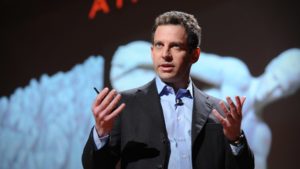
Sam Harris [from: https://pi.tedcdn.com]
At that point, I had no real idea of what mediation was or what it was supposed to do for someone like me. My original position on it – say the one I would have taken in college – was that crazy people do it; robed people in monasteries with bald heads who speak in vague haikus like: “The truth is not always beautiful, nor beautiful words the truth.”
Well, that, or this guy. And I knew I didn’t want to get into that hippie or eastern nonsense. (Funny enough – that guy is now VERY into spirituality).
This position had been called into question by Dalio’s revelation but I needed to get more proof to move the Bayesian needle appropriately.
That is, Dalio’s statement is jarring, but is only the statement of one, albeit credible and thoughtful, man. My confidence in the truth of his statement should therefore proportionately reflect its merely anecdotal nature.
To determine the truth of it, I needed to be reading books like this and then the studies and practices on which books like this were based. So I pressed on…
***
A Short Note On My Credibility: I don’t have much..
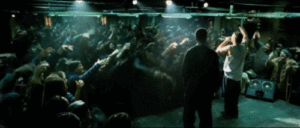
https://68.media.tumblr.com
At the outset, I wish to pull an 8 Mile and tell you, Papa Doc, and the Free World that “I am white, I am a bum, I do live in a trailer with my moms,” and (the truth now) I am certainly no expert in mediation. I am not a monk or a scientist, nor have I even really been meditating for that long.
But “I know something about you” – if you are reading this, I am going to assume (on the basis of virtually no data) that you are also not a monk or a scientist. Further, outside of a few Buzzfeed articles on the top “10 Reasons Brad Pitt Mediates and You Should Too” – you probably haven’t heavily read on the subject. If that’s the case -this article may be helpful.
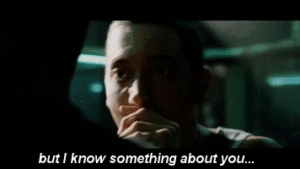
https://media1.giphy.com
If I am wrong, and you are a monk — well, shit (Dr. Evil voice, please). You got me.
In the last 18 months or so, I have read what the relevant experts (neuroscientists, monks, biologists, doctors, etc) have written and the studies performed on the topic. I have also been meditating daily for about a year now. I have gathered all of that information and have lain it out (I love the word, “lain”) here – hopefully in a helpful and digestible format.
In this two-part post, I will leverage these experts to: (1) detangle the definitions of mindfulness and meditation, (2) describe how successful people have used meditation, (3) address common misconceptions about meditation (all of which I held at one point), (4) describe what the majority of the science is showing, (5) describe the dissenting and cautionary viewpoints of scientists, (6) explain my position given the balance of the evidence and (7) show how you can easily begin should you desire.
But first, a fun little story about an experience I had that essentially forced me to make a change… [If you’re not interested in personal crises and are more interested in getting to the experts – simply take your stupid, little thumb and move the screen northward you insensitive, poopy pants. I’m not offended. Whatever. I don’t even care.. It’s fine…].
* * *
POINT BREAK: The “Monkey Mind”
In the spring of 2015, I was under a lot of stress. As commonly seems to be the case, this stress was likely self-induced, but I felt it none the less.
Depression is probably way harsh (Tai) for this instance. Let’s call it a personal recession. Or what many people might call – being a “head case.”

http://resources0.news.com.au/
It was an especially odd feeling for me because throughout most of my life, I have been more of an even-keeled type of personality. Rarely did I feel under a lot of stress. Or at least, that is what people told me, including.. me.
So why was I so stressed at this point? Well, it was a particularly busy and perhaps unfulfilling time at my day job. I decided to find an outlet from that by – not doing fun things – but by creating more work for myself in the way of side projects, reading, etc.
To add injury to.. injury – I hurt my neck – and so I was prevented from doing all rigorous exercise.
I was more and more turning in – into my apartment and coffee shops and books. Safely away from people I care about, movies, and fun.
Smart, right?
The one thing I had to look forward to (according to my mind) was a trip I had booked six months prior on the advice of a family friend – Granny. Granny, a woman after my own heart in terms of learning and travel, suggested this trip to me after doing it herself a few years earlier.
Given that Granny was a career traveler / experiencer / grower / author and showed no signs of slowing at the young and spritely age of (wild guess) 71(?) (she’s volunteered for much of her life in all types of places for things like the Peace Corps, Friendship Force, etc.), I took her advice, as I always do. (In fact, prior to going, I also read her wonderful book on economic and rewarding travel: Caviar Living on Fish Stick Money. (Awesome title; highly recommend).
However, just a few weeks away from the trip, flight and housing booked and volunteer group confirmed, I started to feel this deep fear and anxiety. I started to feel a resistance growing towards this trip. (Perhaps a Pressfield Ressistance).
If you know me, and if you read this article I wrote about this trip, you would understand how odd this is for me. Travel is one of my number one interests – possibly the number one interest in my life. Especially a particular kind of travel.
Not necessarily the type of travel where you go to a beach somewhere, or a trip where you “hit” or “do” three countries in eight days with the goal of accumulating passport stamps and posting photos.
More like the exact type of travel that this trip enabled: learning and meeting the locals and actually speaking with them in whatever foreign place.
And now I was feeling all types of negative feelings towards it. I thought it was too long, I thought I didn’t deserve it, I was scared what I would miss at work and on side projects.
Looking back, all of these feelings sound absurd to me.
I mean we were talking about two weeks. There was virtually no chance of any kind of significantly negative impact on work or life.. It wasn’t like the trip itself was very risky. [Other than a plane plowing into the ocean – but my money says if anything its gonna be a mountain].
But somehow, all I could see was catastrophe and the biggest decision of my life.
It was common to find me at my desk or in my bed or at a coffee shop, just lost in thought, weighing the decision and imagining different realities and simulating them to their worst potentials. I spent literally hours and hours doing this (at least I think I did). All without being consciously aware of it.
As the day approached, the intensity only increased. I worried myself into a dull, thinking panic as I scrambled to get advice from everyone I trusted. Not having the benefit of the view from inside my head, most of them couldn’t see the nightmare-ish scenario I had dreamed up, and so, just gave me very rational pros and cons and told me things I already knew.
About three days prior to the trip, I really lost it: I cancelled my flight, told the organizer I was out and cancelled my Airbnb – forfeiting the money.
I was out. This trip wasn’t going to happened.
Then, the very next morning, still not feeling relieved, I was back IN! I repurchased the flight, Airbnb and told the trip leaders that “I was sooo sorry but I can do it now! The ‘thing’ that had come up is now not a concern,” I reassured them (if not myself).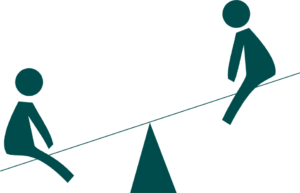
To keep this in perspective – this was an international trip, a program booked months in advance – not some trip to Del Boca Vista. Most of my friends start packing for this kind of trip with more time to spare then I had upon rebooking.
And you thought you were crazy? No, Kanye – “That shit cray.”
The day of the trip, I woke up refreshed. I decided I was going. I had lunch with my friend Mark at his restaurant, Vien (great fast-casual).
When I left lunch, the sun was shining. It was probably about 70 degrees and the nicest day of the year so far. I walked north towards Greenwich avenue with a smile on my face.
The time was about 2PM and my flight was at 7:30 PM out of Newark International. Considering traffic, time of day, the fact that I had to check luggage, and that it was an international flight, I would have to leave by 5:30 PM the latest to make it in time.
I grabbed my laundry and entered my apartment around 2:30 PM. Three hours was, of course, way more time than I needed to pack. I started to think about what I would need and pulled up the trip website.
And then, as I started to pull out clothes and take out a little list I had created – everything started to come back to my mind. I started to reconsider my decision AGAIN.
I sat on my bed, telling myself I would think about it for a sec. Huge mistake.
From that first thought, I was taken away to god knows where. I started thinking about the trip and imagining what it would be like. That led to other thoughts like “would I even want to meet these people,” “did I really want to drink that week,” and endless other things that might happen there. Then I imagined all of the work I would be able to get done if I stayed. And it continued..
Finally, after what seemed like a short while, some noise was made outside my window and I snapped out of it. I figured I would just keep moving on. I looked at the clock really quick just to make sure, though I was pretty certain I’d read 2:45 PM or maybe 3 PM at the latest.
4:30 PM!
What?! How is that possible?! I had been laying and sitting on my bed thinking, or, more accurately, distracted in thought, for nearly two hours?!
It was a real hoot.
5PM. Time to move.
I threw a ton of shit into my bag, not really discerning whether or not I had enough or too much of one thing or another. I scrounged together all of my things: travel documents,money and miscellaneous-ities.
And as I was about to close the bag, I just couldn’t continue. Thoughts continued to occur to me as I sat on my tiny couch, inside my slightly less tiny 300 sq ft studio, trapped inside my tiny brain.
I opened the Uber app and stared blankly as the little car icons circled my neighborhood. I froze for another 10 minutes or so, just lost in thought, sweating and uncomfortable.
Finally, I confirmed my trip.. 5 minutes away. It was 5:20 PM.
I rushed to get my things together and I was about to walk out the door – it occurred to me: I am not going on this trip. I don’t know what is holding me back so much, but I just don’t feel good about it.
A notification rang on my phone: “your uber is arriving.”
With one hand on my suitcase and the other holding my phone, it was decision time.
I pressed cancel.
And as I sat there, I started to reconsider again. I stared at my phone, frozen, until it was too late. The GPS eta time was now past 6:30 PM. Past the latest time by which I need to check a bag prior to my international flight.
I had successfully made zero decision and merely allowed time to make it for me. I had never felt so out of control of my own life.
I decided I needed to get out of there – out of my mind and out of my apartment.
I told my friend I was coming over, we would need his rooftop and some beers. He agreed.
I left all of my stuff in the bag and strewn around my apartment, went downstairs and stepped outside into a calm and warm late Spring afternoon. The contrast to my previous dark and stormy three hours was not lost on me.
And as I biked over to his place, I sort of let the bike glide as I looked up. And as a feeling of lightness and a sense of relief and clarity washed over me, I noticed my surroundings – bright and breezy. Everyone was smiling; the sky was not falling.
No, unlike my talking head, the sky was the same as it ever was: clear and blue.

http://static3.crated.com/
***
As you might be able to discern from this post, I eventually got out of my head (mostly) and took that life-altering trip 13 months later. (Yea, I got out).
The second time, however, I was much more mentally equipped.
Since that episode the year prior, I began to take action. Many actions. All targeted at “figuring myself out” and how to move forward to the places that I wanted to go. Not just geographically, but in my life, with my mind and with my body.
Now over a year and a half after that episode, I am miles away from that mindset, and I have barely looked back.
To be clear, that is not to say that I have “arrived” or that I do not regress or have certain setbacks. This is not to say that any of the routes I have taken are correct or that I have even performed them correctly. This is not advice.
I also want to be clear that I am not likening my little episode to anything clinical. Most other days I was perfectly fine.
Having said that, this is to tell about an experience I had and what I did to respond. It is to say that I have made some measurable progress – and that’s what it’s about, isn’t it?
One aspect of that “recovery” attempt would definitely be the practice of meditation.
“Meditation?! What are ya, some kinda freak!?
“Wait… what is meditation again…?”
First, that hurt. But – good question. Let’s first define what I am talking about.
***
Meditation and Mindfulness
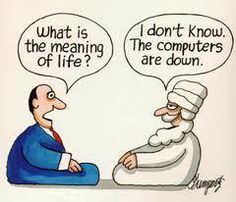
https://s-media-cache-ak0.pinimg.com
About 3,000 years ago, Gautama Buddha (probably) said: “Your worst enemy cannot harm you as much as your own thoughts, unguarded.”
Then about 2,000 years ago, Philosopher-King and Roman Emperor, Marcus Aurelius echoed: “Failure to observe what is in the mind of another has seldom made a man unhappy; but those who do not observe the movements of their own minds must of necessity be unhappy” (Mediations, Book II, pg 2.)
Then about 1,000 years ago: St Augustine said: “And men go abroad to admire the heights of mountains, the mighty waves of the sea, the broad tides of rivers, the compass of the ocean, and the circuits of the stars, yet pass over the mystery of themselves without a thought”
Then about 350 years ago, Scientist and Philosopher (a “Sciphil”), Blaise Pascal (early nomination for coolest name possible) carried the torch remarking: “All of humanity’s problems stem from man’s inability to sit quietly in a room alone”
Then about 130 years ago, “Father of modern psychology,” William James wrote: “The faculty of voluntarily bringing back a wandering attention, over and over again, is the very root of judgment, character, and will. … An education which should improve this faculty would be the education par excellence”
Then like 3 years ago, Sam Harris wrote “How we pay attention to the present moment largely determines the character of our experience and, therefore, the quality of our lives.”
These quotes (emphasis’ added – emphasi?) can be interpreted as getting at the state of “Mindfulness.” And besides making it regrettably obvious that names used to be way awesome-r – this timeline is used to show one thing: this meditation and mindfulness thing is not a new theory despite what thousands of 60’s hippies and 2010s hipsters might have you believing.
Detangling the Two
Mindfulness
Especially with the current media buzz surrounding “mindfulness” and how popular things like “meditation” have become given certain media outlets and podcasts, it is easy to confuse the definition of these two terms.
Let’s first look at mindfulness – which is the end goal. It is what some people describe as “being present.”
As Buddhist Monk and HeadSpace founder Andy Pudicome remarks:
“…mindfulness means to be present. It means being ‘in the moment,’experiencing life directly as it unfolds, rather than being distracted, caught up and lost in thought. It’s not contrived or temporary state of mind that you need to somehow create and maintain. On the contrary, it is a way of stepping back and resting the mind in its natural state, free from the usual chaos.”
You know those times when you are driving in your car and then suddenly, you’re home. You don’t remember consciously thinking about driving, or anything. That is the antithesis of mindfulness. In that case, you would have preferred to perhaps see the sunset, the trees, notice your body position, listen to the music playing, etc.
To be clear, the enemy is not the thinking per se. As Sam Harris clarifies: “the problem is not thoughts themselves but the state of thinking without being fully aware that we are thinking.”
This is being “lost in thought” and it is the opposite of mindfulness.
So how to get there? How do we get to a place where we are consistently more mindful, more of the time?
Welp, just like you perfect any other skill – we talkin’ bout practice. And that practice is called “meditation.”
Meditation
Meditation, on the other hand, is not mindfulness. It is the daily, controlled practice meant to achieve mindfulness. It is the countless hours of posture and finger agility on the piano, or repeating of conjugations in language learning, with the aim of making music or speaking, effortlessly, with a native.
It is a technique used to sharpen a skill that takes a lot of time to develop, but may have significant benefits along the way.
It is similar to practicing a sport. Say, golf. If you spend 30 minutes per day putting for, say, two months, you will likely make vast improvement (given a decent technique). But you are still many a fortnight away from being a pro (if ever). However, just as in golf, we do not need to be pro in order to play the game – far from it.
While there are various forms of meditation technique, they all seem to have the goal of mindfulness. Additionally, they are incredibly simple sounding yet difficult to perfect.
As Sam Harris quips:
The simple instructions for how to meditate “are analogous to instructions on how to walk a tightrope—which, I assume, must go something like this:
- Find a horizontal cable that can support your weight.
- Stand on one end.
- Step forward by placing one foot directly in front of the other.
- Repeat.
- Don’t fall. Clearly, steps 2 through 5 entail a little trial and error.
Happily, the benefits of training in meditation arrive long before mastery does.”
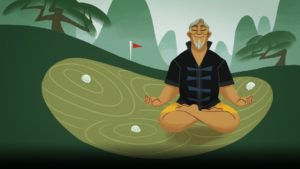 Back to golf: (1) Get a ball, (2) Choose a club, (2) stand beside the ball, (4) hit it in the hole. Typically, you will find this happening the first time you try. Not this.
Back to golf: (1) Get a ball, (2) Choose a club, (2) stand beside the ball, (4) hit it in the hole. Typically, you will find this happening the first time you try. Not this.
The steps of meditation are similarly simple: (1) sit on a chair, (2) concentrate on an image or your breath, (3) be aware in the event that you are taken off into thought, (4) gently bring your attention back to the breath, (5) repeat for 10-20 minutes.
Of course, like the tightrope walker, the language learner, the golfer, or the musician – this practice is difficult at the outset and gets a bit easier over time.
“OK, great” – you might be thinking. “Now you’ve defined these things but who have they helped besides that Dalio, dude? How can we verify that it is actually the meditation helping them and not some placebo or cultish belief? As we all know, billionaires believe a whole bunch of things that I don’t. Does everyone agree with the popular science? And how would I begin if I wanted to try?”
I thought you’d never ask…I’ll cover all of that and more in Part II of this post: “Meditation: According to the Experts.”
To read on – click here.
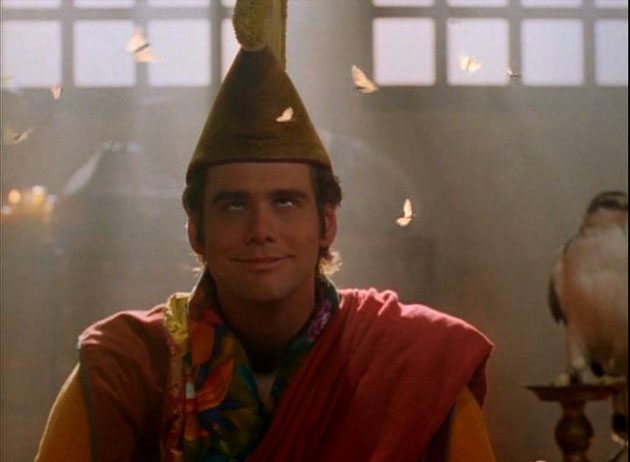


One Comment on “Meditation: My Introduction”
You assumed wrong. I have read more than a few articles on Meditation. Being judgmental is not good for meditation practice. LOL. I like these YouTube links you have. Good idea!